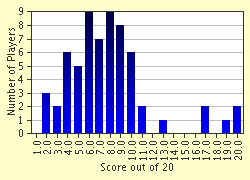Quiz Answer Key and Fun Facts
1. The Chinese practice of placing small Buddha images against the wall of an oyster's shell is often cited as the first successful pearl culturing. However, making a free round pearl suitable for stringing remained an elusive goal for centuries. Which of these scientists developed a technique resulting in round pearls, some of which can still be seen on display?
2. As research progressed, it was recognized that the most essential component of any successful culturing process was which?
3. A natural pearl was measured by weight, in grains or carats. However, cultured pearls are usually described in millimeters instead. Why?
4. Which statement about cultured pearls is true?
5. How can X-ray images differentiate bead-nucleated cultured pearls from natural pearls?
6. How can X-ray images differentiate non-nucleated cultured pearls from natural pearls?
7. How can X-ray images differentiate natural pearls from pearls cultured using poor-quality natural pearls as nuclei (beaded cultured pearls)?
8. What type of cultured pearl is called a mabe?
9. What type of cultured pearls are described as potatoes, corn, or Rice Krispies?
10. Kokichi Mikimoto's name is forever linked with the history of the cultured pearl. Which statement regarding him is false?
11. What type of oyster is called "Pinctada fucata"?
12. The US Federal Trade Commission changed its regulation in 2002 to allow cultured pearls to be advertised as "genuine pearls".
13. What are keishi?
14. What is conchiolin?
15. Exceptionally large (usually 9 mm in diameter or more) white pearls cultured off the coast of Australia are known as...?
16. Pearls cultured in Tahiti are best known for what characteristic?
17. What is not a reason for the large sizes seen in pearls cultured in southern Pacific locations?
18. Pistolgrip, monkeyface, and pink heelsplitter are common names for what type of mollusk?
19. Cultured pearls are produced commercially in the USA.
20. Which is not a major consideration in assessing the quality of cultured pearls?
Source: Author
ragiel
This quiz was reviewed by FunTrivia editor
ozzz2002 before going online.
Any errors found in FunTrivia content are routinely corrected through our feedback system.

